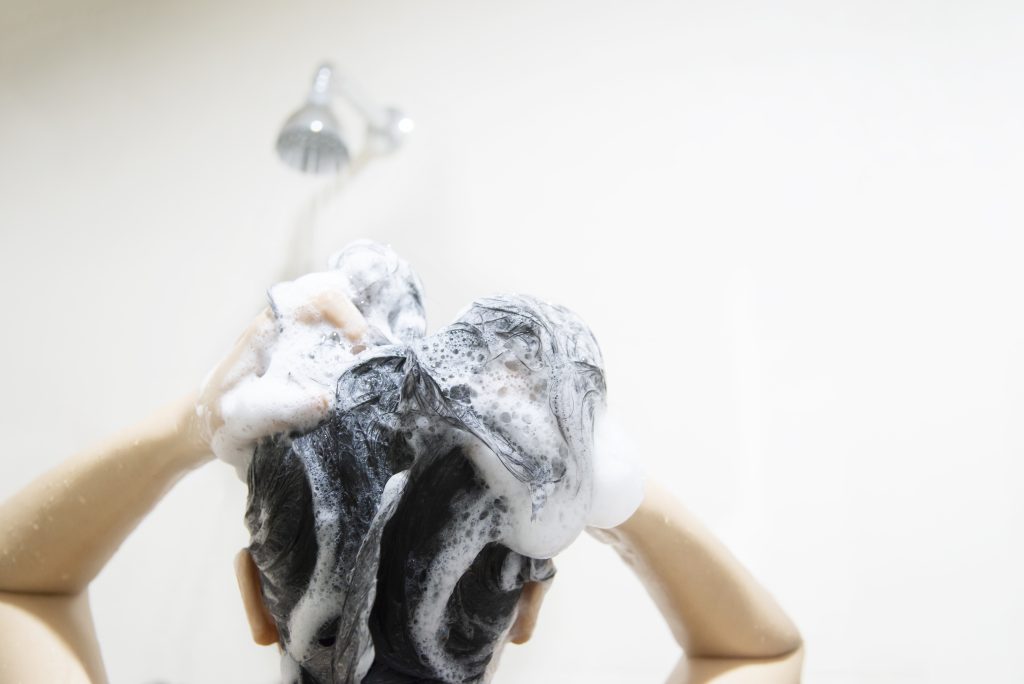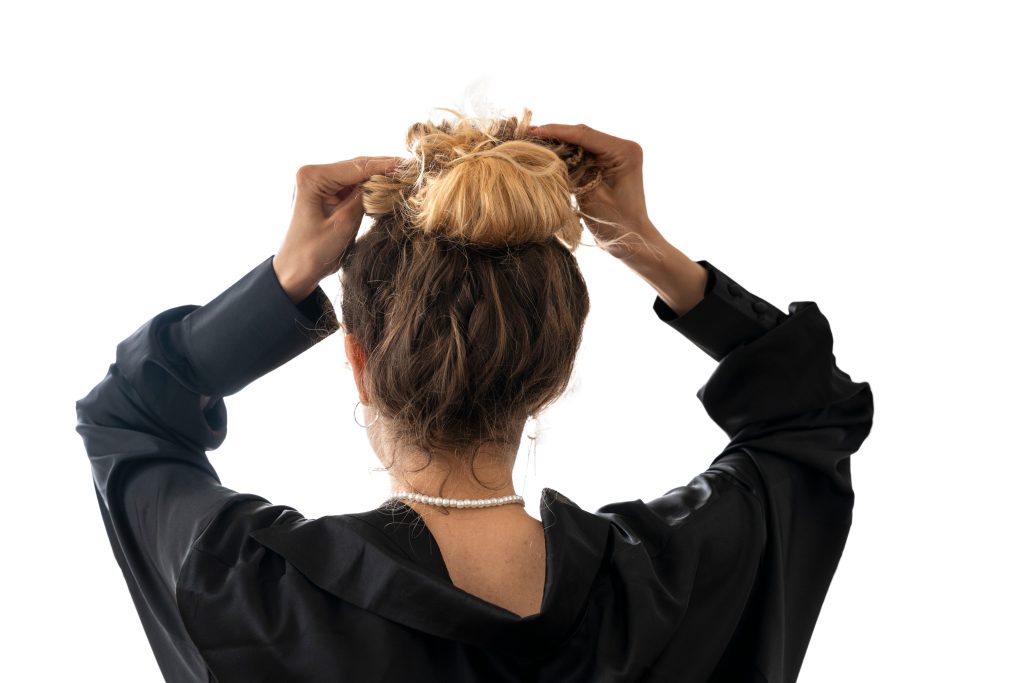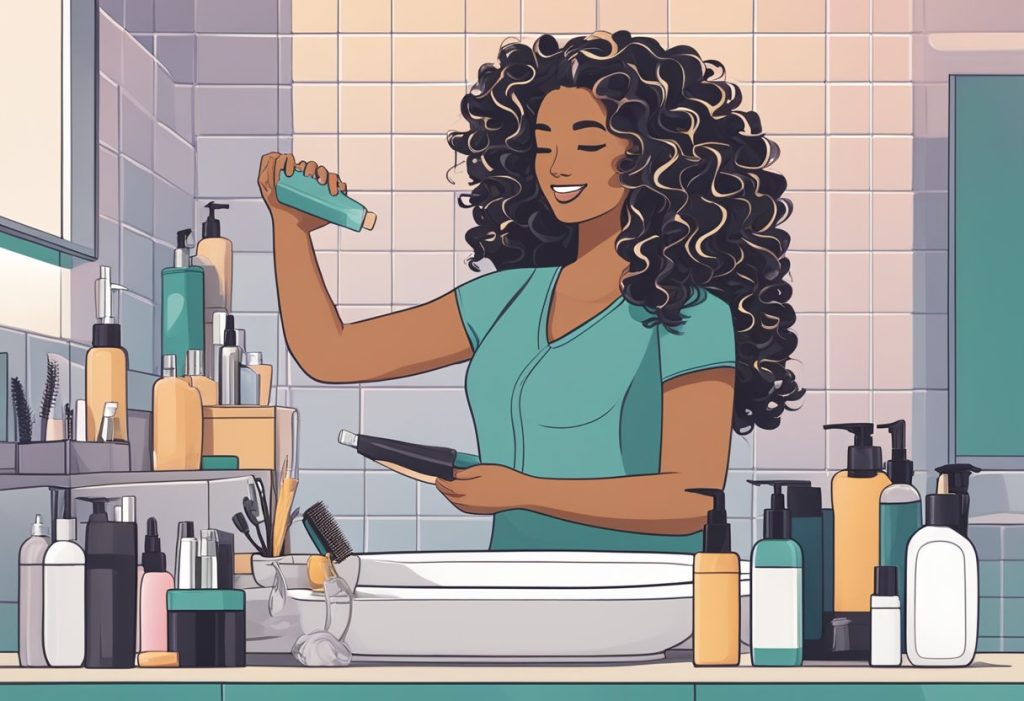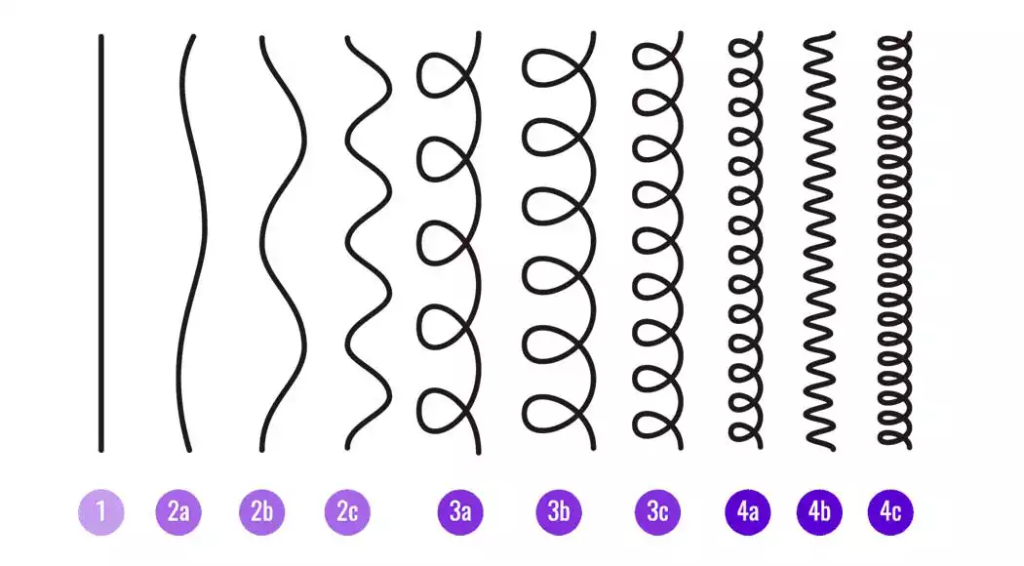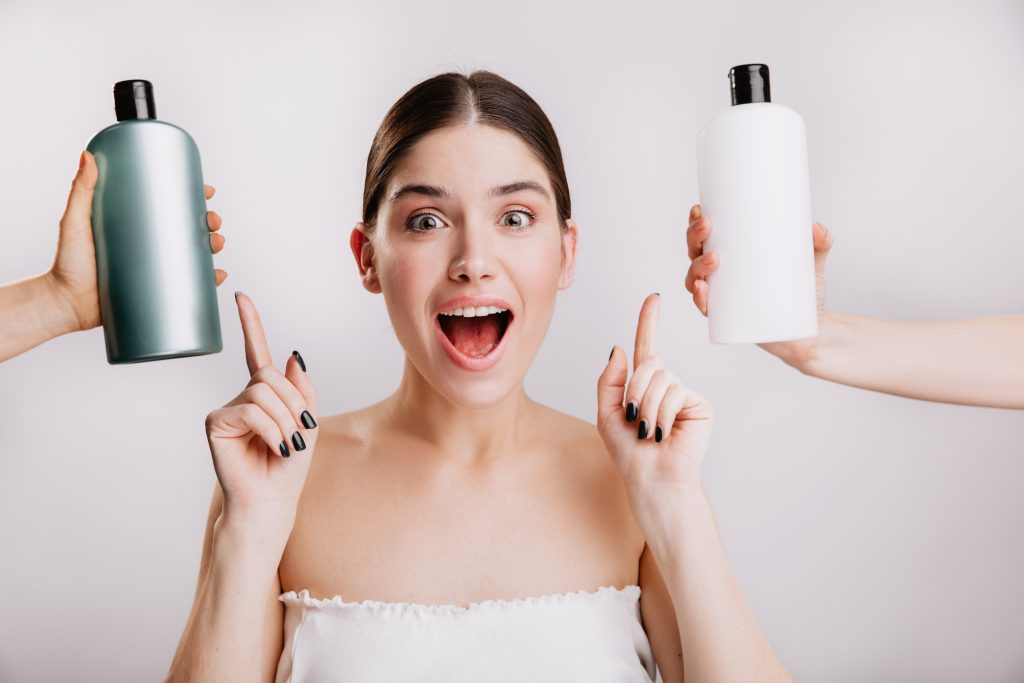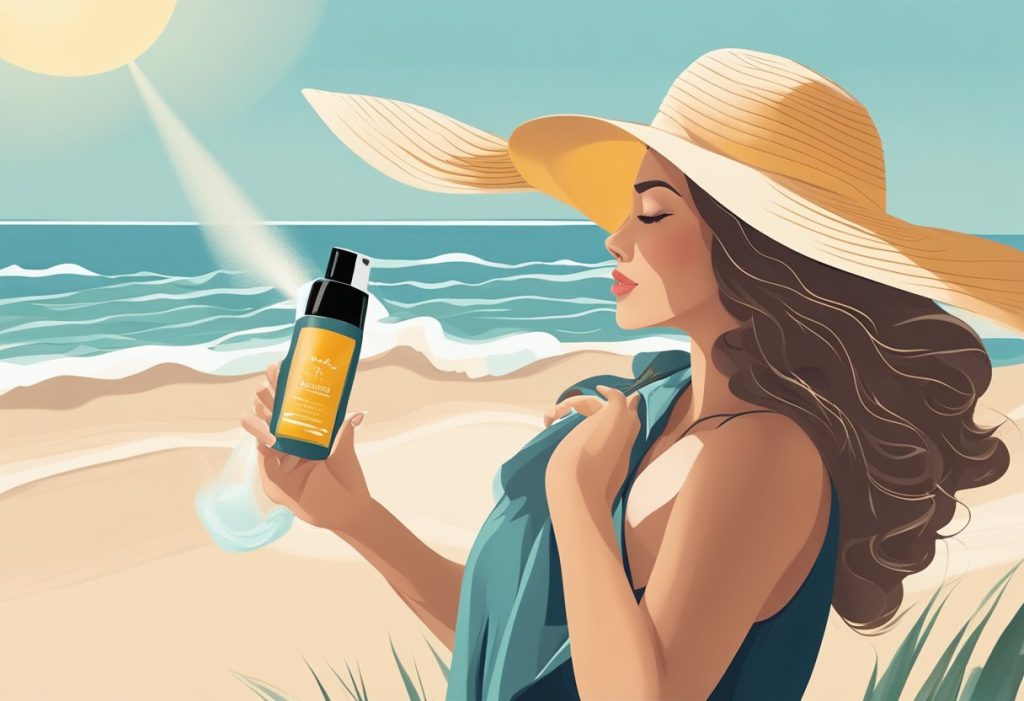
Hi yall!
Have you ever wondered what the difference is between wavy and curly hair? If you are here im guessing you have.
As someone who has struggled with identifying my own hair type for a long time, I can tell you that it’s not always easy to distinguish between the two. However, understanding the differences between wavy and curly hair can help you better care for and style your locks.
First off, let’s talk about the appearance of wavy and curly hair. Wavy hair typically has a looser texture with a gentle, subtle wave pattern that can range from barely-there waves to more defined, beachy waves. On the other hand, curly hair has a more defined, spiral-shaped pattern that can range from loose curls to tight coils. Curly hair also tends to be thicker and denser in appearance than wavy hair.
While wavy and curly hair may look different, they have similarities. Both hair types tend to be more prone to frizz and dryness, so it’s important to use products that provide moisture and nourishment. Additionally, both hair types can benefit from using a diffuser when blow-drying to enhance their natural texture. By understanding the differences and similarities between wavy and curly hair, you can better care for and embrace your unique hair type.

Understanding Hair Types
So, you’re curious about the difference between wavy and curly hair? Well, first things first, let’s talk about hair types in general.
There are different hair types, and each one has its own unique characteristics. Hair types are usually classified into four categories: type 1 (straight hair), type 2 (wavy hair), type 3 (curly hair), and type 4 (coily hair).
- Type 1 hair is straight and doesn’t have any curl pattern.
- Type 2 hair is wavy and has a slight “S” shape.
- Type 3 hair is curly and has a more defined curl pattern.
- Type 4 hair is coily and has a tight curl pattern.
Within each hair type, there are subcategories that further define the curl pattern. For example, type 2 hair is divided into three subcategories: type 2a, type 2b, and type 2c. Type 2a hair is the loosest wave pattern, while type 2c is the most defined wave pattern.
Type 3 hair is also divided into three subcategories: type 3a, type 3b, and type 3c. Type 3a hair has loose curls, type 3b hair has tighter curls, and type 3c hair has the tightest curl pattern.
Type 4 hair is divided into three subcategories as well: type 4a, type 4b, and type 4c. Type 4a hair has a defined curl pattern, type 4b hair has a zigzag curl pattern, and type 4c hair has a more tightly coiled pattern.
Understanding your hair type can help you better care for your hair and choose the right products for your hair type.

Defining Wavy Hair
When it comes to hair, there are many different textures and patterns to consider. Wavy hair is one of these textures, and it’s characterized by its “S” shape. If you have wavy hair, your locks will flow side to side, creating a soft wave that is natural and effortless.
Wavy hair is classified as type 2 hair, and it has three subcategories: 2A, 2B, and 2C. Type 2A hair is the softest wave, while type 2C has the most defined wave pattern. If you have wavy hair, you may notice that it lacks volume at the roots, but it has a lot of movement and body throughout the length of your hair.
When it comes to haircare, wavy hair requires a bit of extra attention. Because it lacks volume at the roots, it can be prone to looking flat and lifeless. To combat this, you may want to consider using volumizing products or blow-drying your hair with a diffuser attachment. Additionally, because wavy hair can be prone to frizz, it’s important to use a moisturizing shampoo and conditioner to keep your locks hydrated and healthy.
Overall, wavy hair is a beautiful and unique texture that can be both playful and sophisticated. Whether you have type 2A, 2B, or 2C hair, embracing your natural hair pattern is the key to maintaining healthy and beautiful locks.

Defining Curly Hair
Curly hair is thick in appearance and has a unique pattern that forms a spiral or ringlet. These curls usually begin at the scalp and hold this shape all the way down to the tips, forming a 360-degree spiral.
It has a range of thickness that people can fall into. Type 3 hair, which is curly hair, is categorized into three subtypes: 3a, 3b, and 3c. Type 3a is the loosest curl pattern and forms an S-shape, while type 3b has a tighter curl pattern that forms a spring shape. Type 3c has the tightest curl pattern and forms a corkscrew shape.
Curly hair is often referred to as “locks,” and it is essential to take care of your locks properly. It’s prone to dryness and frizz, so it is important to use haircare products that are specifically designed for curly hair.

Curly vs Wavy Hair
Many people use these terms interchangeably, but as u know by now, there are actually distinct differences between the two.
Appearance
The most obvious difference between wavy and curly hair is their appearance. Wavy hair generally has a slight bend and flow, while curly hair forms definite curls or coils. The way hair reacts to moisture, also known as hair porosity, plays a crucial role. Typically, curly hair has higher porosity than wavy hair, meaning it can absorb and retain more water.
Another key difference is the thickness of the hair. Curly hair is thick in appearance. Moreover, curls will typically begin at the scalp and hold this shape all the way down to the tips, unlike waves. Curls also have a range of thickness that people can fall into. On the flip side, wavy hair is usually wavy near the bottom and flat as you get closer to the scalp.
Industry Experts
According to Hairstyle Camp, industry experts classify hair types into four categories: straight, wavy, curly, and coily. This classification system is based on the shape of the hair follicle and the angle at which the hair grows out of the scalp. Wavy hair falls into the 2A-2C categories, while curly hair falls into the 3A-4C categories.
Styling
Styling wavy and curly hair can also be different. Wavy hair is usually easier to style and can hold a variety of styles, from beachy waves to loose curls. Curly hair, on the other hand, can be more difficult to style and may require more product and effort to maintain its shape.
In conclusion, while wavy and curly hair may look similar at first glance, there are actually several key differences between the two. From their appearance to their styling, understanding these differences can help you better care for and style your own hair.

Hair Care Products
When it comes to taking care of wavy or curly hair, choosing the right hair care products is essential. There are so many products out there, it can be overwhelming to figure out what to use. Luckily, I have some tips to help you navigate the world of hair care products.
First and foremost, it’s important to use products that are specifically designed for wavy or curly hair. These products are formulated to provide the right amount of moisture and hold to enhance your natural texture. Look for products that are sulfate-free, as sulfates can strip your hair of its natural oils.
Conditioner is a must-have for wavy and curly hair. It helps to detangle your hair, add moisture, and define your curls. You can use a regular conditioner or a leave-in conditioner, depending on your hair’s needs. Deep conditioners are also great for giving your hair an extra boost of moisture. Check ou my top picks of conditioners for wavy hair here.
Styling products are another important part of your hair care routine. Mousses, gels, and styling creams can help define your curls or waves and keep them in place throughout the day. Hair oils are also great for adding shine and reducing frizz.
When it comes to choosing hair care products, it’s important to experiment and find what works best for you. Don’t be afraid to try new products and see how your hair responds. With a little trial and error, you’ll find the perfect combination of products to keep your wavy or curly hair looking its best.

Common Hair Problems
When it comes to textured hair, there are a few common problems that many people face. Whether you have wavy or curly hair, it’s important to take care of it properly to avoid these issues.
One of the most common problems is frizz. This is when your hair becomes dry and starts to look frizzy and unkempt. It can be caused by a lack of moisture in the hair, or by using the wrong products. To combat frizz, try using a moisturizing shampoo and conditioner, and use a leave-in conditioner or hair oil to keep your hair hydrated.
Another problem that many people face is dryness. This can be caused by a variety of factors, including over-washing your hair, using hot styling tools, and exposure to the sun. To combat dryness, try washing your hair less frequently, and use a deep conditioning treatment once a week. You can also try using a hair mask or oil to add moisture back into your hair.
Moisture loss is another common issue that can affect both wavy and curly hair. This can be caused by a variety of factors, including using harsh shampoos, exposure to the sun, and using hot styling tools. To prevent moisture loss, try using a gentle, sulfate-free shampoo, and use a leave-in conditioner or hair oil to keep your hair hydrated.
Taking care of your hair properly is important to avoid these common problems. Whether you have wavy or curly hair, make sure to use the right products and techniques to keep your hair looking healthy and beautiful.
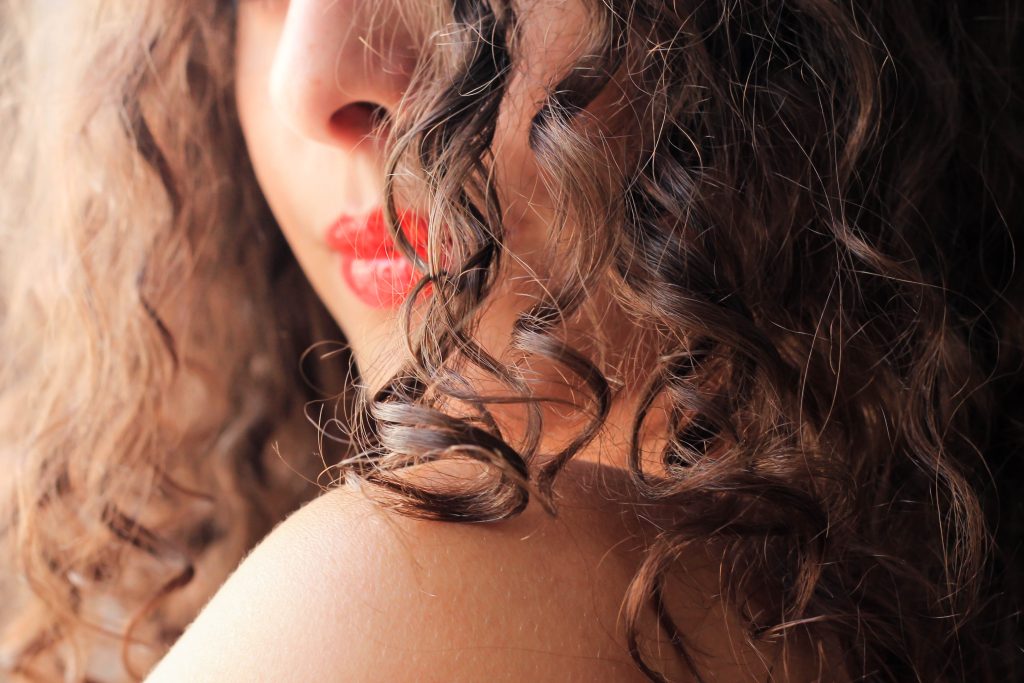
Embracing Your Natural Hair
Here are some tips for embracing your natural hair:
Natural is Beautiful
First things first, natural is beautiful! Don’t let anyone tell you otherwise. Your hair is unique and it’s a part of who you are. Embrace it and love it for what it is.
Healthy Hair is Happy Hair
Healthy hair is happy hair! Take care of your hair by using products that are gentle and nourishing. Look for products that are sulfate-free, paraben-free, and silicone-free. Also, make sure to deep condition your hair regularly to keep it healthy and hydrated.
It’s a Hair Journey
Embracing your natural hair is a journey, not a destination. It takes time and patience to figure out what works best for your hair. Don’t be afraid to try new things and experiment with different styles. You might be surprised at what you discover!
Hair Community
Join the hair community! There are so many people out there who are going through the same journey as you. You can find support, advice, and inspiration from others who have embraced their natural hair. Plus, it’s always nice to have someone to talk to about your hair struggles and triumphs.
Embracing your natural hair is all about loving and accepting yourself for who you are. It’s a journey that takes time and patience, but it’s worth it in the end. Remember, natural is beautiful!
FAQ
Can hair have both wavy and curly textures?
Yes, hair can have both wavy and curly textures. This is known as a “combination” hair type. Combination hair can have different curl patterns in different parts of the head, or even in different sections of the same strand of hair.
How can I determine if my hair is wavy or curly?
One way to determine if your hair is wavy or curly is to look at the shape of the curls. If your hair forms a complete circle when it curls, then it is curly. If your hair forms an S shape when it curls, then it is wavy.
Are there any specific hair care tips for wavy hair?
Yes, there are some specific hair care tips for wavy hair. Wavy hair tends to be more prone to frizz than straight hair, so it is important to use a moisturizing shampoo and conditioner to help smooth the hair cuticle. Wavy hair also benefits from using a leave-in conditioner or curl cream to help define the waves and reduce frizz. It is also important to avoid brushing wavy hair when it is dry, as this can cause the hair to frizz and lose its shape.
What are some common misconceptions about wavy and curly hair?
One common misconception about wavy and curly hair is that it is unmanageable or difficult to style. In reality, wavy and curly hair can be just as versatile and easy to style as straight hair. Another misconception is that wavy and curly hair is always thick and voluminous. While some wavy and curly hair types are thick and voluminous, others are fine and delicate. It is important to embrace your natural hair texture and find the right products and styling techniques that work for you.
Conclusion
Congrats, you’ve reached the end of this post! I hope i could help you define whether your hair is wavy or curly. Remember to take well care of it, aas it is beautiful and not something that shoud be hidden behing heating tools.
If you liked this post, feel free to share your thoughts in the comment section down below!


